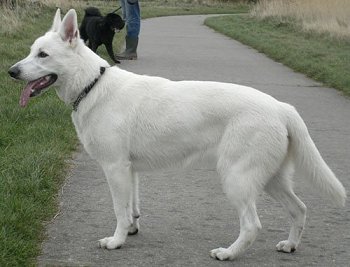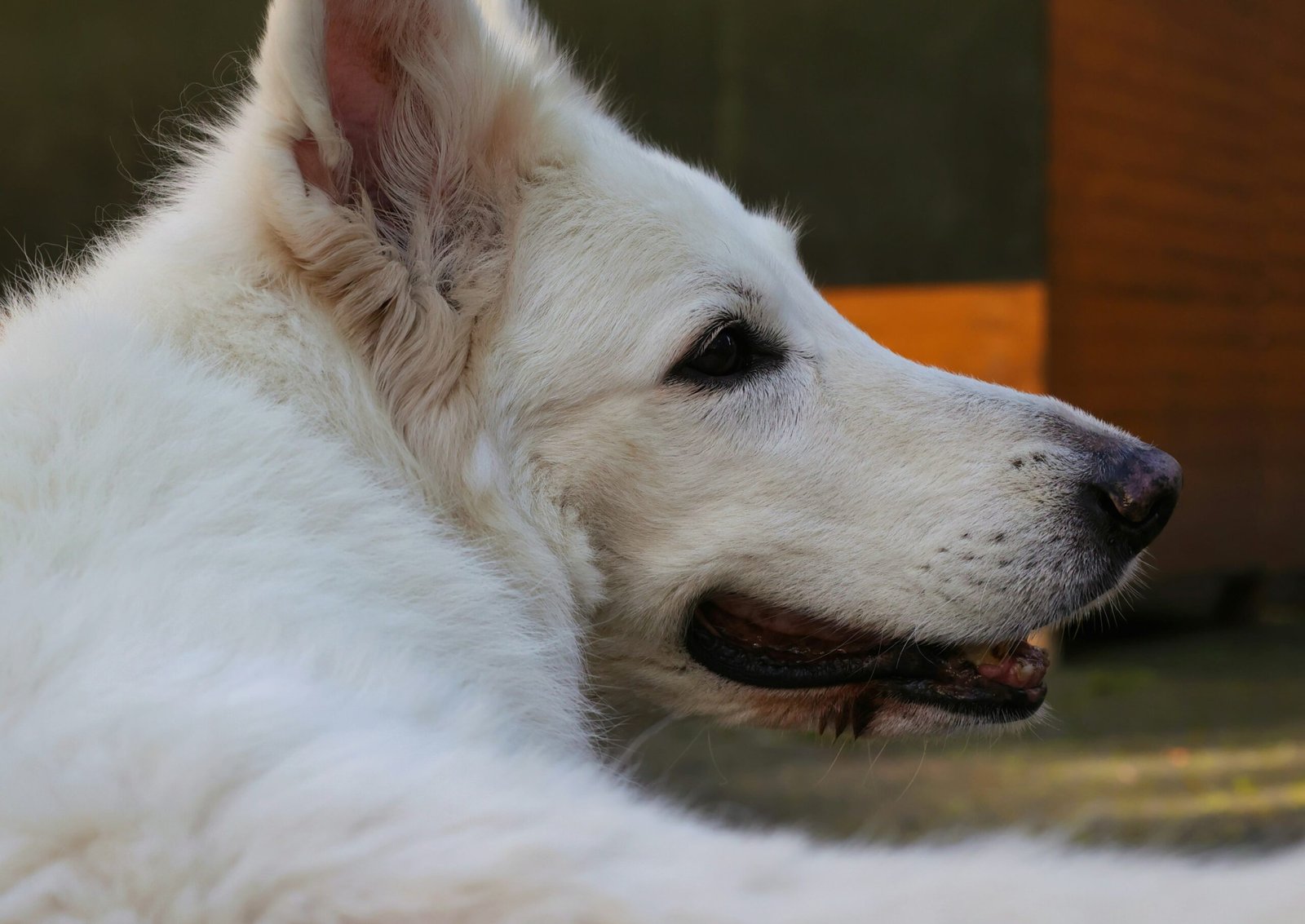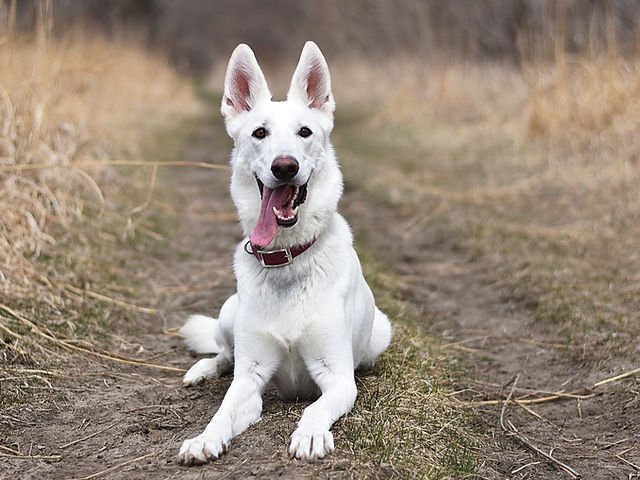Are you curious about how to train a White Shepherd for obedience? Look no further! In this article, we will provide you with all the essential tips and tricks to successfully train your White Shepherd to be an obedient and well-behaved companion. Whether you are a first-time dog owner or have experience with other breeds, we have got you covered. Let’s jump right in and discover the effective methods for training your White Shepherd to be obedient and responsive to your commands.
Basic Training
Socialization
Training a White Shepherd for obedience starts with socialization. This involves exposing your dog to various people, animals, and environments from a young age. By doing so, you help your White Shepherd develop good manners and positive behavior around others. To socialize your dog effectively, take them for walks, visits to parks, and introduce them to different people and animals. Encourage and reward friendly and calm behavior during these interactions.
House Training
House training is an important aspect of basic training. Start by establishing a designated bathroom area for your White Shepherd and take them there consistently. Use positive reinforcement techniques, such as treats and praise, to reward your dog every time they go to the bathroom in the appropriate spot. Maintain a consistent schedule for bathroom breaks, especially after meals and naps. With patience and consistency, your White Shepherd will quickly learn where and when to relieve themselves.
Leash Training
Leash training is crucial for both your White Shepherd’s safety and your own. Begin by introducing your dog to a properly fitted leash and collar or harness. Allow your dog to adjust and become comfortable with the presence of the leash before attempting to walk them. Start in a quiet, distraction-free environment and gently guide your White Shepherd as they walk alongside you. Reward them with treats and praise for walking calmly and staying by your side. Gradually increase the difficulty by introducing distractions, such as other dogs or people.
Command Training
Command training is the foundation of obedience training for a White Shepherd. Teach your dog basic commands such as “sit,” “stay,” “down,” “come,” and “heel.” These commands establish your role as the leader and help your White Shepherd understand what is expected of them. Use positive reinforcement techniques, such as treats, praise, and petting, to reward your dog for following commands correctly. Repeat the commands consistently and practice them in various settings to improve your dog’s response and reliability.
Positive Reinforcement Techniques
Reward-based Training
Reward-based training is a highly effective method of training a White Shepherd. By rewarding desired behaviors with treats, praise, and play, you motivate your dog to repeat those behaviors in the future. When teaching new commands or behaviors, break them down into small steps and reward your White Shepherd for each successful attempt. This positive reinforcement builds a strong bond between you and your dog, making the training process enjoyable and rewarding for both of you.
Clicker Training
Clicker training is another positive reinforcement technique that can be particularly useful for White Shepherds. The clicker is a small device that makes a distinct sound when pressed. By pairing the sound of the clicker with a reward, such as a treat, your dog learns to associate the click with a positive outcome. Clicker training allows for precise timing, making it easier to communicate with your White Shepherd and mark desired behaviors accurately. This method helps your dog understand what behaviors earn them rewards, speeding up the training process.

Obedience Commands
Sit
Teaching your White Shepherd the “sit” command is an essential part of obedience training. Start by holding a treat just above and slightly behind your dog’s nose. Slowly move the treat up, causing your dog’s head to follow and their bottom to lower into a sitting position. As soon as your dog sits, say “sit” and immediately reward them with the treat. Repeat this sequence consistently until your White Shepherd learns to sit on command, gradually phasing out the treat rewards and relying more on verbal praise and physical affection.
Stay
The “stay” command teaches your White Shepherd to remain in one place until you give them permission to move. Begin by having your dog sit or lie down. With an open palm facing towards your dog, say “stay” and take a step back. If your White Shepherd remains in place, return to them and reward them with praise and a treat. Gradually increase the distance and duration of the stay, always returning to reward your dog for successfully staying. Be patient and consistent, and eventually, your White Shepherd will understand and follow the “stay” command reliably.
Down
The “down” command teaches your White Shepherd to lie down on command. Start with your dog in a sitting position and hold a treat close to their nose. Slowly lower the treat to the floor, guiding your dog’s body into a lying down position. Once your White Shepherd is down, say “down” and reward them with the treat and praise. Practice this command regularly, gradually phasing out the treat rewards and relying more on verbal and physical praise. With consistency and positive reinforcement, your White Shepherd will quickly learn to respond to the “down” command.
Come
The “come” command is crucial for your White Shepherd’s safety and off-leash control. Begin by using a long leash in a familiar and secure area. Squat down, open your arms, and enthusiastically call your dog’s name followed by the command “come.” Gently reel in the leash if necessary to help guide your White Shepherd towards you. Once your dog reaches you, reward them with treats, praise, and affection. Practice the “come” command in various environments, gradually increasing the distractions and distance. Remember to consistently reward your White Shepherd for a successful response to reinforce the behavior.
Heel
“Heel” teaches your White Shepherd to walk calmly and closely by your side without pulling or lunging. Start with your dog on a properly fitted leash and hold it firmly with your hand. Begin walking forward and say “heel” in a clear and firm tone. If your White Shepherd starts to drift away or pull, use verbal cues and gentle leash corrections to guide them back into the desired position. Gradually increase the duration and difficulty of the heel command, rewarding your dog with treats and praise for maintaining the right position. Consistent practice and positive reinforcement will help your White Shepherd master the heel command.
Advanced Training
Off-Leash Training
Off-leash training allows you to have full control over your White Shepherd even without the physical restriction of a leash. To train your dog for off-leash obedience, it is crucial to have a solid foundation in basic commands and a strong recall command, such as “come.” Start in a safe and enclosed area, gradually increasing the level of distractions. Use positive reinforcement techniques and rewards to reinforce good behaviors and recall responses. With patience, consistency, and dedication, you can teach your White Shepherd to listen and obey even when off-leash.
Agility Training
Agility training is a fantastic way to keep a White Shepherd physically and mentally stimulated. This training involves maneuvering your dog through a series of obstacles, such as tunnels, jumps, and weave poles, in a timed course. Not only does agility training enhance your White Shepherd’s physical fitness, but it also strengthens the bond between you and your dog. Start with basic obstacles and gradually progress to more challenging ones as your White Shepherd builds confidence and agility skills. Seek guidance from a professional trainer to ensure your dog’s safety and proper technique.
Scent Work
Scent work taps into a White Shepherd’s strong sense of smell and engages their natural instincts. This training involves teaching your dog to search for and indicate the presence of specific scents or objects. Begin by introducing your White Shepherd to a specific scent, such as a cotton swab with a scent oil, and reward them for showing interest or detecting the scent. Gradually increase the difficulty by hiding the scent in various locations and teaching your dog to alert you when they discover it. Scent work provides mental stimulation and can be a fun and rewarding activity for your White Shepherd.
Trick Training
Trick training is a delightful way to bond with your White Shepherd while also providing mental stimulation and physical exercise. Teach your dog a variety of tricks, such as rolling over, shaking hands, or playing dead. Break down each trick into steps and use positive reinforcement techniques to reward your dog for their progress. Trick training builds a strong foundation of communication and trust between you and your White Shepherd. It also provides an opportunity for your dog to showcase their intelligence and creativity.

Common Training Challenges
Separation Anxiety
Separation anxiety is a common issue that many White Shepherds may experience. This anxiety manifests when the dog is separated from their owner or left alone. To address separation anxiety, it is important to gradually acclimate your dog to being alone through short periods of separation, rewarding calm behavior, and maintaining a consistent routine. Providing your White Shepherd with engaging toys and activities can also help distract them during periods of separation. If the separation anxiety persists, seek guidance from a professional trainer or behaviorist.
Barking
White Shepherds are known to be alert and protective, which can lead to excessive barking if not properly managed. To address barking behavior, identify the triggers and work on desensitizing your dog to those triggers. Use positive reinforcement techniques to reward your White Shepherd for remaining calm and quiet in the presence of triggers. Consistent training, mental stimulation, and providing appropriate outlets for your dog’s energy can help reduce excessive barking.
Jumping
Jumping up on people is a behavior that White Shepherds may exhibit to seek attention or display excitement. To discourage jumping behavior, practice consistent training in impulse control. Teach your dog alternative behaviors, such as sitting or offering a paw, to greet people instead of jumping. When your White Shepherd remains calm and does not jump, reward them with praise and treats. Consistency and patience are key in teaching your dog appropriate greetings and discouraging jumping behavior.
Digging
Digging is a natural behavior for White Shepherds, as they have a strong prey drive and may dig to search for small animals or find cool spots. To manage and redirect digging behavior, provide your dog with designated digging areas, such as a sandbox or a specific area in the yard. Encourage your White Shepherd to dig in these designated spots by burying toys or treats in them. Help your dog understand that digging in the appropriate areas is rewarding, while digging in other areas is not. Additionally, ensure your White Shepherd receives plenty of physical exercise and mental stimulation to minimize the urge to dig.
Working with a Professional Trainer
Finding a Good Trainer
When considering working with a professional trainer, it is essential to find someone who uses positive reinforcement methods and has experience working with White Shepherds or similar breeds. Seek recommendations from trusted sources, such as veterinarians or fellow dog owners. Research trainers thoroughly, read reviews, and inquire about their training philosophy and credentials. It is important to find a trainer who will create a positive and effective training environment for you and your White Shepherd.
Benefits of Professional Training
Enrolling in professional training classes or hiring a private trainer can offer numerous benefits when training your White Shepherd. Professional trainers have the knowledge and expertise to address specific training challenges, customize training programs to suit your dog’s needs, and offer guidance on advanced training techniques. They provide a structured learning environment and create opportunities for socialization with other dogs and people. Additionally, working with a professional trainer enables you to receive real-time feedback and ensures you are using appropriate training methods.
Training Classes vs. Private Lessons
Training classes and private lessons both have their advantages and choosing between them depends on your preferences and your White Shepherd’s individual needs. Training classes offer a group setting where your dog can learn to socialize with other dogs and people. This environment can be beneficial for improving social skills and general obedience. Private lessons, on the other hand, provide one-on-one attention and allow for a more personalized training experience. This may be ideal if your White Shepherd requires specific attention or if you prefer a more focused and tailored approach to training.

Training Tools and Equipment
Training Collar
A training collar, such as a martingale collar or an adjustable slip collar, can be useful for maintaining control and teaching leash manners to your White Shepherd. It is important to choose a collar that fits properly and does not cause discomfort or harm to your dog. Consult with a professional trainer to determine the best type of training collar for your White Shepherd and learn how to use it correctly.
Leash
A sturdy leash is an essential tool for obedience training and maintaining control of your White Shepherd. A leash with a length of six feet is typically recommended for training purposes. Ensure the leash is made of a durable material, provides a comfortable grip, and has a secure attachment to the collar or harness. Regularly inspect the leash for any signs of wear or damage, replacing it if necessary to ensure both your safety and your White Shepherd’s.
Clicker
A clicker is a simple device that makes a distinct clicking sound when pressed. It is used as a marker to communicate with your White Shepherd during training. The clicker allows you to precisely mark desired behaviors, making it easier for your dog to understand what they are being rewarded for. When introducing a clicker, associate the sound with a reward, such as a treat. Clicker training can be a valuable tool for shaping behavior and facilitating communication with your White Shepherd.
Treats
Treats are an essential tool for positive reinforcement training. Choose small, soft, and bite-sized treats that are appealing to your White Shepherd. Use high-value treats, such as small pieces of chicken or cheese, for more challenging training tasks or distractions. Always keep treats handy during training sessions to promptly reward your dog for correct responses and good behavior. Remember to consider your dog’s health and nutritional needs when selecting treats.
Creating a Training Schedule
Consistency
Consistency is crucial when creating a training schedule for your White Shepherd. Establish a regular training routine by setting aside dedicated time each day for training sessions. Consistent practice helps reinforce learned behaviors and allows your dog to progress steadily. Keep the training sessions consistent in terms of duration, frequency, and location. This predictability creates a sense of structure for your White Shepherd and improves their ability to focus and retain information.
Short Training Sessions
White Shepherds, like many dogs, have shorter attention spans. To optimize their learning and prevent boredom, keep training sessions short and focused. Aim for multiple sessions throughout the day, each lasting around 10-15 minutes. Short training sessions allow your White Shepherd to stay engaged and motivated, ensuring that the training remains positive and productive. Remember to end each session on a positive note and offer plenty of praise and rewards.
Building on Successes
When creating a training schedule, it is important to build on your White Shepherd’s successes. Start with simple commands and behaviors that your dog is already familiar with, gradually adding more challenging tasks as they progress. Consistently reinforce learned behaviors before moving on to new commands or exercises. By building on successes, you create a positive learning experience and maintain your White Shepherd’s motivation and enthusiasm for training.

Maintaining Obedience
Continued Reinforcement
Even after your White Shepherd has mastered basic obedience commands, it is crucial to continue reinforcing and practicing those behaviors. Regularly incorporate training and reinforcement into your day-to-day interactions with your dog. Reinforce obedience commands during walks, playtime, and other activities, ensuring that your White Shepherd understands they still need to listen and follow commands in various situations. By consistently reinforcing obedience, you reinforce your role as the leader and strengthen the bond between you and your White Shepherd.
Regular Practice
Regular practice is key to maintaining obedience in your White Shepherd. Set aside time each week for training sessions that focus on reinforcing known commands and introducing new challenges. Practice in different environments to simulate real-world situations and improve your dog’s response and reliability. This regular practice helps to keep your White Shepherd mentally stimulated, sharpens their obedience skills, and ensures they remain well-behaved both at home and in public.
Challenging the Dog
To maintain obedience and prevent boredom, it is important to regularly challenge your White Shepherd with new training tasks and exercises. Teach them advanced commands, introduce fun and stimulating activities, and continuously expand their training repertoire. Challenging your White Shepherd keeps their mind engaged, prevents complacency, and reinforces their training foundation. Offer new experiences, games, and puzzles that encourage problem-solving and reinforce their learning capacity.
Conclusion
Training a White Shepherd for obedience requires time, patience, consistency, and positive reinforcement techniques. By following a comprehensive training program that encompasses basic commands, positive reinforcement, advanced training, and addressing common challenges, you can develop a well-behaved and obedient companion. Remember to work with a professional trainer if needed and utilize the appropriate training tools and equipment. Through clear communication, mutual trust, and regular practice, you can create a strong bond with your White Shepherd and enjoy a lifetime of obedience and companionship.


